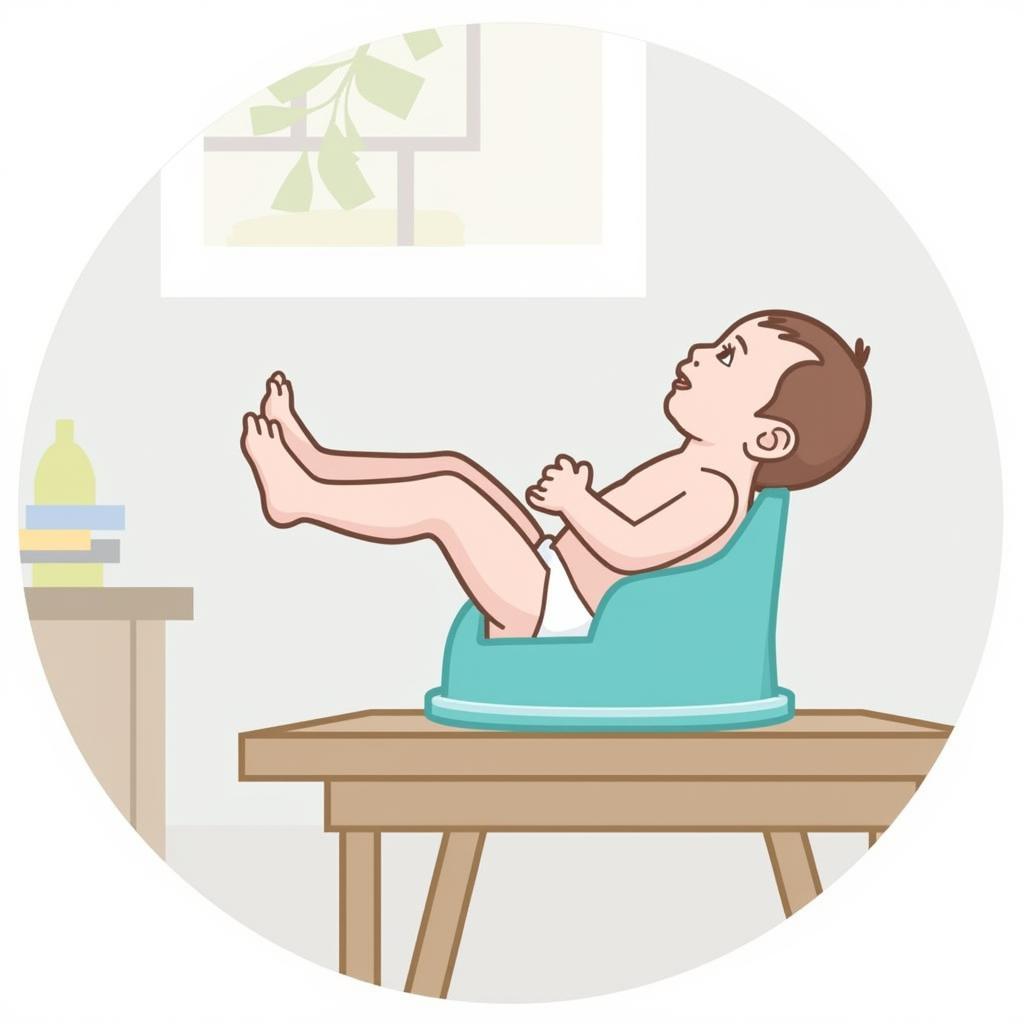The Bumbo seat is a popular product for parents of young babies. However, there have been a number of safety concerns raised about these seats in recent years. It’s important to be aware of the potential dangers of Bumbo seats and to use them safely.
 Bumbo seat tip over risk
Bumbo seat tip over risk
Understanding the Bumbo Seat Warning
The Bumbo seat has been the subject of numerous safety warnings and recalls due to reports of infants falling out of or tipping over in the seats, sometimes resulting in serious injuries. The unique design of the seat, while intended to provide support, can actually lead to babies slipping down and out of the leg openings, posing a strangulation hazard.
The Consumer Product Safety Commission (CPSC) has issued several warnings about Bumbo seats, urging parents and caregivers to exercise extreme caution. These warnings highlight the importance of understanding the potential risks associated with the product and using it responsibly.
Common Misconceptions about Bumbo Seats
While marketed as a helpful tool for parents, there are some common misconceptions surrounding Bumbo seats that can lead to dangerous situations:
- Misconception: Bumbo seats are safe for use on any surface.
Fact: Bumbo seats should never be used on elevated surfaces like tables, counters, or couches. The seat’s rounded base makes it easy to tip over, even with slight movements from the baby. - Misconception: Bumbo seats can be used as car seats or highchairs.
Fact: Bumbo seats are not designed or safety-tested for use in vehicles or as highchairs. They lack the necessary restraints and safety features to protect a baby in these situations. - Misconception: Bumbo seats help babies sit up sooner.
Fact: There is no evidence to support this claim. In fact, using a Bumbo seat for extended periods can hinder a baby’s development by restricting their movement and preventing them from strengthening their core muscles naturally.
Tips for Using a Bumbo Seat Safely
If you choose to use a Bumbo seat, it’s crucial to prioritize your child’s safety by following these guidelines:
- Always use the seat on the floor. Never place the seat on a raised surface, even for a short time.
- Never leave your baby unattended while they are in the seat. Active supervision is essential to prevent falls and other accidents.
- Use the seat for short periods. Limit the time your baby spends in the Bumbo seat to 10-15 minutes at a time.
- Ensure the seat is properly fastened. Always use the safety straps provided with the seat and check that they are securely fastened before placing your baby inside.
- Discontinue use once your baby can climb out. When your baby becomes more mobile and shows signs of being able to climb out of the seat, it’s time to stop using it altogether.
You can find more information about Bumbo seat warnings on websites like bumbo seat warnings, bumbo floor seat warning, and bumbo baby seat safety warning.
Alternatives to Bumbo Seats
There are several safe and effective alternatives to Bumbo seats that can provide similar support and promote healthy development:
- Play mats: Play mats offer a safe and spacious area for babies to stretch, roll, and practice their motor skills.
- Activity centers: Activity centers provide babies with a variety of engaging toys and activities while offering a secure and supportive environment.
- Floor seats with wider bases: Look for floor seats that have a wider, more stable base to reduce the risk of tipping.
Prioritizing Your Baby’s Safety
The well-being of your child should always come first. While Bumbo seats can seem convenient, it’s crucial to be aware of the potential risks and to follow safety guidelines diligently. Remember, even with precautions, accidents can still occur. By choosing safe alternatives and prioritizing active supervision, you can provide your little one with a secure and stimulating environment in which to thrive.

